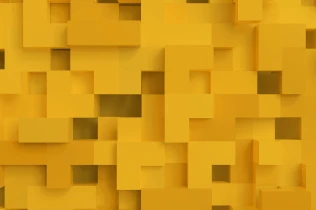The world of branding has come a long way. Long gone is the era of slapping a logo on something and calling it done. But these days, we have an even bigger problem to solve for most companies. It’s no secret that brands today need to stand out in a ridiculously cluttered digital media ecosystem. The answer to that conundrum is distinctive brand assets.
Long before the distinctive brand asset era of today, the likes of Amazon and Apple were already two steps ahead. They both went from garage businesses to global superpowers, in no small part because they had a ruthless approach to brand building. They were brutally simplistic in sticking to one logo, one strapline and a colour or two here and there. In other words, a huge part of their success comes from building and protecting their distinctive brand assets.
Sorry, distinctive brand.... what?
Yeah we know, it sounds fancy. But it's dead simple really. Distinctiveness quite literally means that your brand stands apart. If they're all blue - you pick orange. If they're all square - you'll be the round one. It makes sense, right? Doing this means you get seen, you stand more chance of being remembered, or bought.
Making sure your brand stands out takes a lot more than picking a trendy logo and hoping that it does the business. Ideally, you want to build a collection of brand assets that get noticed and remembered by your customers. We're talking straplines, (even specific words), stories, illustrations, advertising styles, music, shapes, sounds and much more.
But you can’t pick things at random. These need to be strategically planned, selected and used everywhere customers might come across you.
The ultimate shortcut
Have you ever had this experience? You’re abroad, somewhere completely new to you. You need to eat. So what do you look for? Either the risk of a completely new joint, but then you see those famous golden arches and think - “yeah that’ll do.”
The “yeah that’ll do” factor is what drives more sales than we care to admit. For many businesses, this is the awkward bit. You know for a fact that you've got a better product than the competition. But 95% of your audience doesn’t know what you sell, or why you're better, because they just don't think about you that much.
Instead, your audience relies on how distinctive your brand is to decide. In other words, they remember “the blue one” more easily than a list of product features. If you use any distinctive device (a logo, a colour, a sound, a design style) as part of a long-running campaign, this helps you create that memorability.
Your unique story
But where do you go to get inspiration for these distinctive brand assets?
The good news is, most companies have a treasure trove of past assets to draw on here. Almost every company we work with except startups has a history and archived stuff that can form the backbone of your story and your brand.
Think about a brand like Cadbury’s. Back in 2020, they ran their first rebrand in 50 years (yes that’s right - 50 years!) Using their years of brand heritage their signature logo-type was redrawn to reflect a more handwritten style. And they even reworked the packaging, using a pattern originally embossed on the first Dairy Milk bars way back in 1905. And of course, that famous purple.
Over the last three years we have been re-connecting with our roots, which is why the new identity is grounded in the original intent behind the brand and celebrates our unique product credentials and iconic distinctive assets in a modern way – Ben Wicks, Global Brand Director at Cadbury
So it just goes to show, if you’ve got the brand heritage, why not use it to your benefit and have something a little distinctive that helps people see and remember your brand?
Making distinctive brand assets effective
As we mentioned before, the biggest issue with most brand assets is that they aren't distinctive. They just don't have enough of a stand out factor to do the job. But a bigger problem is chopping and changing too much. Most companies don’t have a system and a process of documenting, protecting or using their distinctive assets. As a result managers come and go, and the brand changes more often than it should.
People tend to use their distinctive brand assets for a few years, get sick of them, and then change them. Resist that temptation. Even if you’re sick of them, even if your team is sick of them, and even if the office dog barf when he sees you roll out the same banner for the umpteenth time; that’s not a good reason to change your assets. In fact, you getting sick of your assets is likely a sign that you're doing something right.
The Goldilocks formula
Our final top tip for building assets is around how many you should be aiming to produce. We recommend no more than 4-5. Your logo is going to be one of those slots, so it's actually 3-4. What are you going to put in the other 3-4 slots? A tagline? A colour combination? A sound? A character? Or something else?
The choice is yours. But once you have your assets up and running, get them wrapped up in cotton wool, and change them only when it’s truly necessary.




